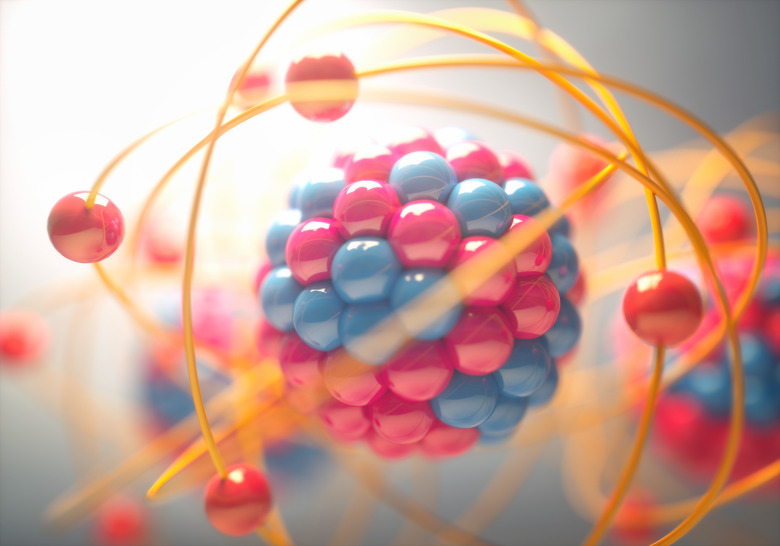What Is A Mole?
When most people hear the word "mole," they picture furry underground rodents that burrow through gardens. However, in the field of chemistry, the term "mole" couldn't be more different from that image. In fact, the chemical mole is one of the most important concepts in science since it allows chemists and students to count atoms and molecules.
TL;DR (Too Long; Didn't Read)
A chemical mole is the amount of a substance required for the atomic particles of that substance to equal the number of atoms in 12 grams of carbon. Chemists estimate this to be 6.022 x 1023 or 602 hexillion, also called Avogadro's constant.
Measurement in the Chemistry Lab
Measurement in the Chemistry Lab
A mole is simply a unit of quantity just like a dozen or a millennium are units of quantity. When it comes to calculating atomic particles during chemical reactions, all the common units of quantity are far too small to be useful for scientists. This is because atoms themselves are so infinitesimally small. To illustrate, 500,000 carbon atoms stacked together roughly compare to the width of a single human hair.
To solve the problem of measuring such tiny particles, chemists need a very large unit of quantity: a mole. Just like the term "a dozen" means twelve items and "a millennium" means a thousand items, a mole means 602 hexillion items.
Science History: Avogadro
Science History: Avogadro
The figure behind the concept of the chemical mole is 19th century Italian scientist Amedeo Avogadro. This major thinker was the first person to suggest that elements can link together to form molecules and not just exist as individual atoms and that equal volumes of gases held under equivalent conditions also contain equivalent numbers of molecules. Avogadro's work was largely ignored during his lifetime but later formed the basis for calculating one of the most crucial numbers in chemistry, which became known as Avogadro's constant.
Counting Atoms
Counting Atoms
Avogadro's constant is equivalent to the number of atoms in 12 grams of the most abundant form of carbon (carbon-12), or 6.022 x 1023. Chemists use this number to determine moles. A mole of any substance is the amount of that substance required for the number of atomic particles to equal Avogadro's constant, which is approximately 602 hexillion particles. So a mole of water is the amount of water that contains 602 hexillion atomic particles. This is true for anything: a mole of iron, a mole of helium and a mole of elephants all contain 602 hexillion particles.
The concept of the mole is important for scientists because it means that one mole of any element has exactly the same number of atoms as one mole of any other element. This information allows chemists to count atomic particles for even very complex chemistry formulas and reactions.
Moles and Measurement
Moles and Measurement
For individual elements, one mole is also equal to the atomic weight of that element in grams, which you can find on the periodic table. For a molecule like water (H2O), which has two parts hydrogen with one part oxygen, one mole of water is equal to the atomic weight of each hydrogen (1.008 grams plus 1.008 grams) plus the oxygen (16 grams) or 18.016 grams per mole. The unit is often abbreviated as mol, so one mole of water is usually written 18.016 g/mol.
While the chemical mole might not be as cute as the garden rodent that shares its name, the concept of the mole is the foundation for the field of chemistry. Understanding the somewhat abstract idea of the mole as a unit of quantity can be tricky but is key to success as a chemist or chemistry student.
Cite This Article
MLA
Mayer, Melissa. "What Is A Mole?" sciencing.com, https://www.sciencing.com/what-is-a-mole-13712133/. 20 April 2018.
APA
Mayer, Melissa. (2018, April 20). What Is A Mole?. sciencing.com. Retrieved from https://www.sciencing.com/what-is-a-mole-13712133/
Chicago
Mayer, Melissa. What Is A Mole? last modified August 30, 2022. https://www.sciencing.com/what-is-a-mole-13712133/
